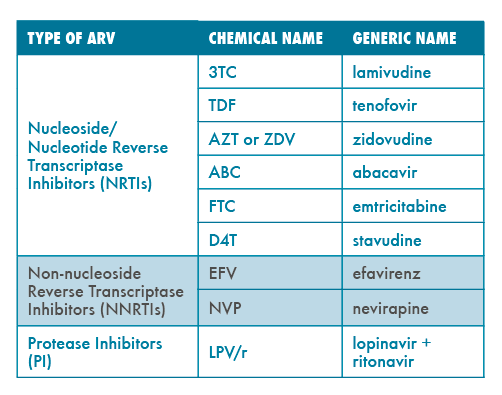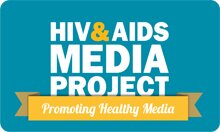Antiretroviral Treatment (ART)
Antiretrovirals or ARVs are drugs which generally interfere with the proteins or enzymes that HIV uses to make copies of itself inside the body's cells. Taking ARVs therefore reduces the amount of HIV in the blood and body, known as the viral load.
Because there is less HIV in the body the attack on the body's immune system is halted and even reversed, substantially prolonging the lives of people living with HIV and making them less infectious.
 Types of ARVs
Types of ARVs
ARVs are usually grouped into four broad types according to which HIV enzyme or protein they interfere with.
When HIV enters the cell it has everything it needs to take over the CD4 host cell contained in its viral envelope.
After binding to the cell, it releases its RNA, and the three proteins/enzymes (reverse transcriptase, integrase and protease) into the cell leaving the envelope behind.
Although there are broad types of ARVs there can be many ARVs in each type. For example tenofovir, emtricitabine and lamivudine are all NRTIs and lopinavir+ritonavir is a protease inhibitor.
A combination of ARVs is taken in order to prevent drug resistance and mount an attack on the virus which targets different points in the virus' replication cycle.
NOTE: The table on the right only lists ARVs available through through the SA government's antiretroviral treatment programme.
 Also see the JournAIDS' section on HIV progression.
Also see the JournAIDS' section on HIV progression.
Fusion and entry inhibitors
These ARVs don't work on a particular protein but instead stop HIV from even starting the replication process by stopping it from attaching itself to the cell.
Nucleoside analogue reverse transcriptase inhibitors (NRTIs) and non-nucleoside reverse transcriptase inhibitors (NNRTIs)
These two types of ARVs both target the reverse transcriptase protein and stop it from converting HIV’s RNA into DNA inside the host cell. NRTIs and NNRTIs do this in different ways.
Integrase inhibitors
Integrase inhibitors work on the HIV protein Integrase. These ARVs stop HIV from merging its DNA with the CD4 cell’s DNA.
Protease inhibitors (PIs)
PIs interfere with protease, which HIV uses to assemble new virus molecules.
 ARVs, like other pharmaceutical drugs, have several names. A name which reflects its chemical composition e.g. TDF. A second generic name which is used for all drugs with the same composition e.g. Tenofovir. Lastly drugs have a brand name given to it by the company which manufactures it e.g. Viread.
ARVs, like other pharmaceutical drugs, have several names. A name which reflects its chemical composition e.g. TDF. A second generic name which is used for all drugs with the same composition e.g. Tenofovir. Lastly drugs have a brand name given to it by the company which manufactures it e.g. Viread.
Page last updated: 13 October 2011






